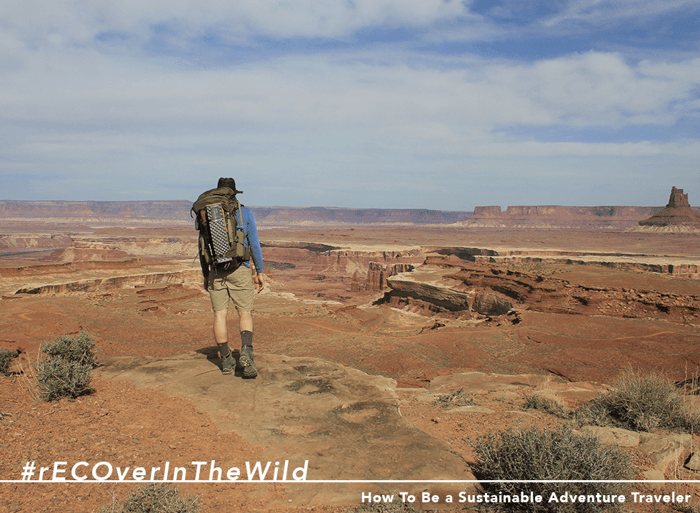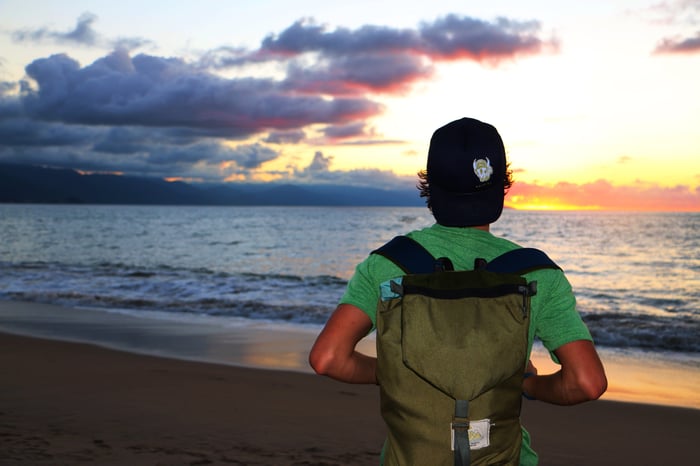Recover in the Wild
Be the Impact in the places you love, the places you have yet to explore, and the places you return to every chance you get…
Whether it is out your back door or halfway around the world, adventure travel is something that fulfills our human drive to get out there, explore, experience, and be inspired. Being an adventure traveler is a valuable opportunity to support conservation of natural resources and sustainable community development locally and globally, simply by having the time of your life. However, as with anything, if we don’t do our homework, we may, in fact, be degrading rather than improving the very thing that gives us so much. That’s why this summer, Recover is launching Recover in the Wild to inspire anyone and everyone to pursue adventure, whatever that means to them, in a sustainable way. Featuring a series of signature giveaways, gear, short films, Recover Readers and Sustainability Tips, from Memorial Day to Labor Day we are giving you what you need to get out there and Recover in the Wild. Be sure to tag your adventures this summer #rECOverInTheWild … we can’t wait to see where your adventure takes you!
To start you off and make it easy to do good when doing what you love, here are our top 10 tips on how to be a sustainable adventure traveler and change the world for the better every time you get outside.
How To Be a Sustainable Adventure Traveler
- Bring your Reusable Water Bottle.
We can’t say it enough. Purchasing single-use plastic water bottles has an absolutely enormous impact on environmental and human health worldwide and this translates into everything... even adventure travel. The consumption of throw-away plastic has an even greater impact in developing nations, where the plastic recycling rates are less than 2% and recycling facilities are far less common. Recover, GRAYL water filters and the Adventure Travel Trade Association are involved in an initiative to eliminate single-use plastic water bottles from the adventure travel industry. Based on an initial survey conducted by ATTA, the 239 adventure travel company respondents alone spend $7.6 million to purchase 8 million single-use plastic water bottles annually, indicating that there is not only a huge impact on the environment from bottled water, but also that it’s really expensive for businesses and travellers! So, bring your own bottle when you travel, and ask that any companies you travel with offer alternatives to single-use throw-away bottles.
- Be Respectful of local cultures, people, and ways of life.
When visiting foreign places, dress appropriately, and generally recognize and respect different cultures, people and ways of life. If you are curious about appropriate dress in destination locations, do a quick google about it and also check out Lonely Planet’s online and book resources addressing this topic. Some destinations may not find it appropriate to show shoulders or legs, particularly for women. Dress is just one example of a potential cultural difference, so look up customs about the area you are traveling to beforehand, and you may get a kick out of learning about everything from proper handshakes to eating etiquette in a new place. Respecting these small things makes a big difference in our experience with locals and in our impacts as adventure travelers.
3) Be Mindful of what you give.
While it may feel good to give things away on our trips, make sure to consider what implications result from haphazardly giving gifts. Tourism in certain destinations has resulted in community dispute issues and the breakdown of traditional social structures based upon well-intentioned giving from travelers. If you would like to make a direct and positive impact in the local community you are traveling to, be in touch with a local organization, school, etc. to see what community-driven initiatives are currently in the works, and how a donation or volunteer might contribute to long-term sustainable initiatives that empower the local community. Look for initiatives that have been created by the community, rather than those imposed upon them.
4) Pay Attention to what you buy, where it’s from and where it’s going.
Adventure travel is venturing farther and farther off the beaten path. In many global destinations, packaged and processed items and the very notion of “trash” may be relatively new to cultures that used to only produce compostable waste. Recognize that bringing and purchasing heavily packaged items may significantly contribute to a trash problem in areas that do not have the infrastructure to handle it. The quintessential example is the enormous trash epidemic that is a result of adventure travelers on Mount Everest, which adventure travelers and the industry as a whole are now aggressively working to address.
5) Learn how to say Thank You, Hello, and Where’s the bathroom? in the local language before you go.
Learning at least a couple of phrases in the local language before you go can be incredibly helpful, and regardless, is always appreciated.
Here are a couple to get you started:
Spanish
Thank You: Gracias!
Hello: Hola!
Where’s the bathroom?: Dónde está el baño?
Italian
Thank You: Grazie!
Hello: Ciao!
Where’s the bathroom?: Dov'è il bagno?
Mandarin Chinese
Thank You: Xiexie
Hello: Ni hao!
Where’s the bathroom?: Yushi zai nali?
6) Research Sh*t.
As much as we’d all like to look the other way (we get it!), human waste is a challenge that quickly realizes as a result of an increased number of adventure travelers anywhere. From Iceland to India to Yellowstone National Park, a growing number of adventure travelers has posed significant challenges to safely managing human waste with existing infrastructure. If you plan to camp in remote areas without bathrooms, do your research on the area before you go and be prepared to bring “wag bags” if you find that packing waste out or other measures are the way forward in protecting the pristineness of the place for when your return.
7) Ask before you take photos.
Sometimes we can’t help but pull out our cameras and start snapping away during travel; the exoticness and magic of foreign places and people is intoxicating and captivating. Before taking photos of people and people’s homes, always ask or figure out a gesture that asks if it’s ok. Think about what it would be like if someone pulled out their camera and started snapping photos of you while you were going about your daily coffee shop run. It all comes back to being respectful of the people and places we are fortunate enough to visit.
8) Choose the Adventure of public transportation.
Reduce your carbon footprint by opting for public transportation in your destination when possible. Public transportation can sometimes be an adventure in itself and offers opportunities to meet local people and get a better insight into the local culture and area. Also, keep your eye out for electric options, and use your power as a consumer to promote the demand for them. Currently, easyJet and Wright Electric are working to develop an electric jet and plan to have a prototype in a couple of years. Rental electric cars are already available in many destinations.
9) Read Between the lines of companies’ claims and drive sustainable practices with consumer power.
Ask questions of adventure travel and tour operators, hotels, restaurants and parks before you book your trip. If an eco-lodge claims to be an eco-lodge, what are they doing to support the local environment and community? Sometimes, there is an enormous amount of economic leakage in the tourism industry, meaning that not much of the revenue actually is paid to local community members and projects. There are many operations out there that pay fairly, treat employees well, and support local conservation and environmental education, so look for those and look for businesses that are owned or partnered with local community members and initiatives.
10) Pick Up Trash.
Bring hand sanitizer and you can wear gloves or not, but rocking the habit of picking up trash when you see it is rad, especially in the great outdoors. What if everyone thought ‘Someone else will pick that up…’ as they pass by an energy bar wrapper on your local trail. Be a steward of the places you love and leave them more wild than how you found them. It never hurts to check out the Leave No Trace practices, and stay updated with them! The creation of an 8th Leave No Trace Principal that addresses technology use in wild places is currently in development, so stay updated, and be aware of the impact you may have on other’s experiences by keeping your phone volume on out there. We all gain a sense of connection from taking a break from our gadgets!
Being an adventure traveler means not only protecting, but also improving our playgrounds near and far with sustainable and responsible practices. Be the impact for a sustainable tomorrow today by doing what you love the right way.







